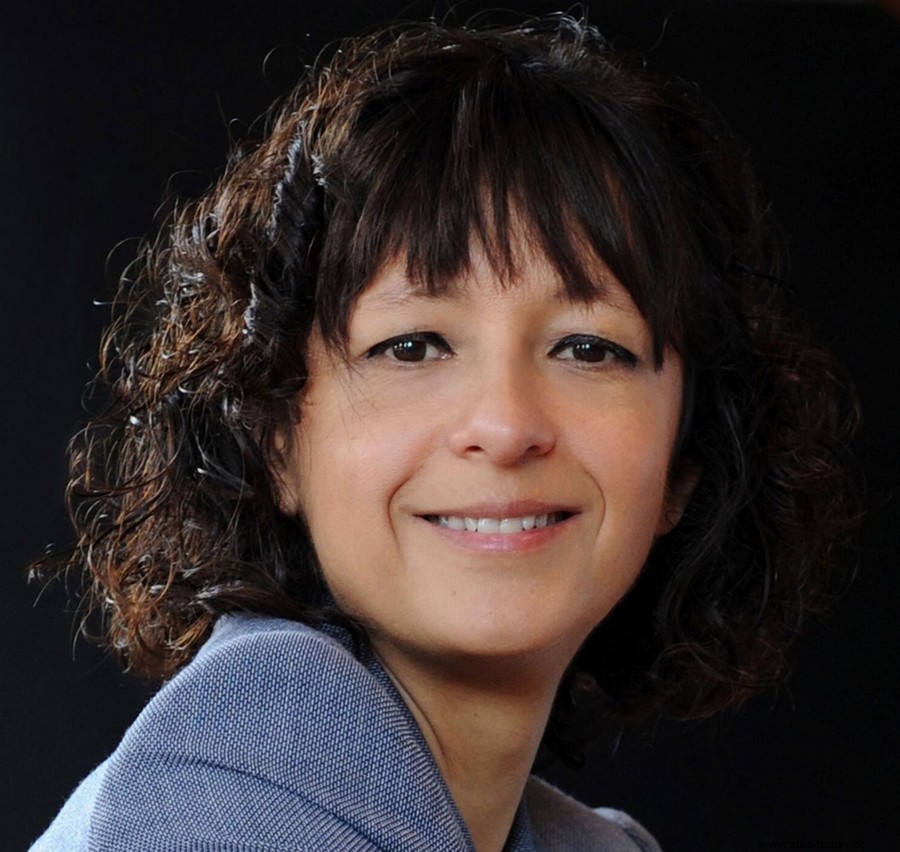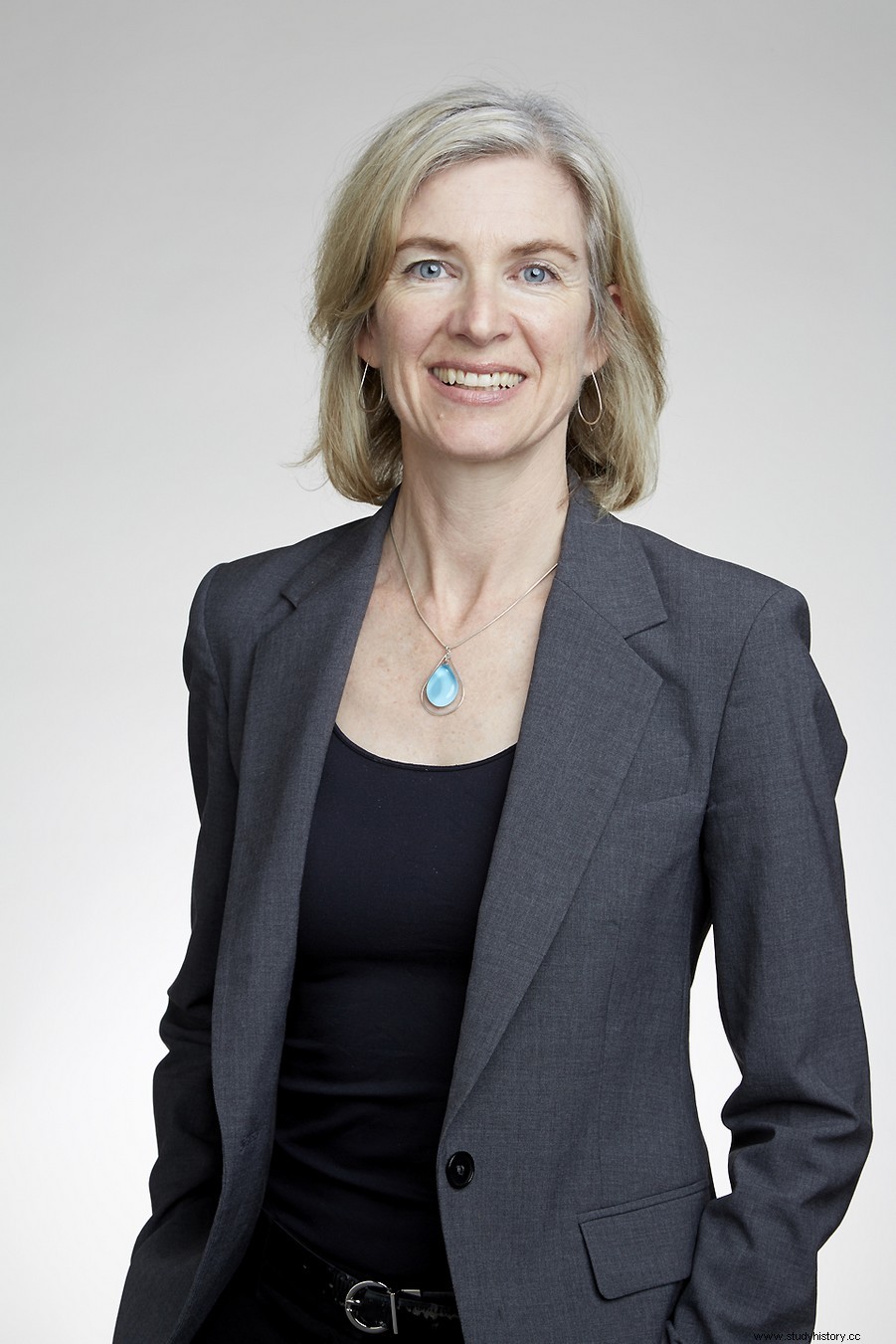In 2012, researchers Emmanuelle Charpentier and Jennifer Doudna developed the gene-editing tool CRISPR-Cas9. This revolutionary discovery, with numerous applications, has earned them numerous awards. In 2017, you chose to award them the Nob’Elles prize for chemistry.
Emmanuelle Charpentier
 Born December 11, 1968 in Juvisy-sur-Orge, Emmanuelle Charpentier studied biochemistry and microbiology at Pierre and Marie Curie University. In 1995, she obtained a doctorate in microbiology at the Institut Pasteur before obtaining post-doctorates in the United States. From 2002 to 2009, she worked as a visiting professor and then assistant professor in Vienna before leading a research team at Umeå University in northeastern Sweden.
Born December 11, 1968 in Juvisy-sur-Orge, Emmanuelle Charpentier studied biochemistry and microbiology at Pierre and Marie Curie University. In 1995, she obtained a doctorate in microbiology at the Institut Pasteur before obtaining post-doctorates in the United States. From 2002 to 2009, she worked as a visiting professor and then assistant professor in Vienna before leading a research team at Umeå University in northeastern Sweden.
Biochemist, microbiologist and geneticist, Emmanuelle works in particular on the expression of genes from the point of view of microbial RNA, as well as on the defense mechanisms of bacteria against viruses. In 2009, she began a collaboration with Jennifer Doudna, from the University of Berkeley.
Jennifer Doudna
 Daughter of academics, Jennifer Doudna was born on February 19, 1964 in Washington and grew up in the state of Hawaii. She studied chemistry at Pomona College , in California. His doctorate, obtained at Harvard, studies ribozymes. After her thesis, she obtained a postdoctorate at the University of Colorado at Boulder then worked at the University of Berkeley
.
Daughter of academics, Jennifer Doudna was born on February 19, 1964 in Washington and grew up in the state of Hawaii. She studied chemistry at Pomona College , in California. His doctorate, obtained at Harvard, studies ribozymes. After her thesis, she obtained a postdoctorate at the University of Colorado at Boulder then worked at the University of Berkeley
.
Geneticist, professor of biochemistry and molecular biology, Jennifer is an RNA specialist. In 2002, she became a member of the American Academy of Sciences. In 2009, she began a collaboration with Emmanuelle Charpentier.
CRISPR-Cas9
In 2012, Emmanuelle Charpentier and Jennifer Doudna published the result of their collaboration:the CRISPR-Cas9 gene editing tool. The Clustered Regularly Interspaced Short Palindromic Repeats – CRISPR ("Short palindromic repeats grouped and evenly spaced") are repeated sequences in DNA, which can be used as a "recognition system" of DNA; Cas9 is an endonueclase, an enzyme capable of cutting both strands of the DNA helix. Combining the two, CRISPR-Cas9, "molecular scissors", makes it possible to edit the genome, cut DNA, inactivate genes or introduce them.
The discovery immediately had a big impact. Its possible applications are multiple:fundamental research, medicine, biotechnology. CRISPR-Cas9, a simple and inexpensive technique, opens up new possibilities for new therapeutic approaches in the case of serious diseases.
The technique and its applications in genetic manipulation also raise fears; Emmanuelle Charpentier and Jennifer Doudna themselves quickly take a position against the risks of drift in the use of CRISPR-Cas9, showing themselves in particular to be reserved about the manipulation of embryos.
After the discovery
The publication of the work of Emmanuelle Charpentier and Jennifer Doudna quickly earned them numerous awards and international recognition. They won the Breakthrough Prize in Life Sciences and the Princess of Asturias Prize in 2015, then the L'Oréal-Unesco Prize for Women in Science in 2016. Emmanuelle also won the Gottfried Wilhelm Leibniz Prize in 2016.
After the discovery, the two researchers set up research companies on the use of CRISPR-Cas9. Emmanuelle, who now works in Germany and directs the Max-Planck Institute for Infectious Disease in Berlin, thus founds CRISPR Therapeutics , dedicated to the fight against serious illnesses; Jennifer, still at UC Berkeley, founds Intellia Therapeutics . Both are continuing their research on this breakthrough discovery in genetics.
